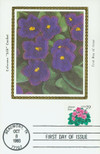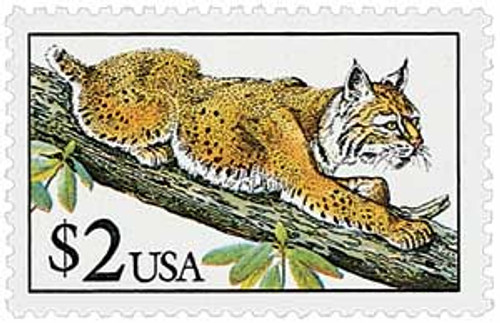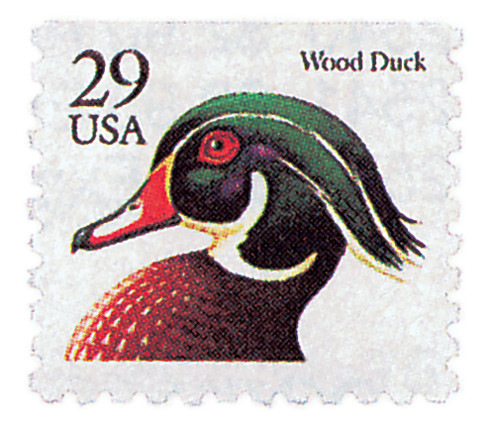
# 2492 FDC - 1995 32c Pink Rose
US #2492
1995 Pink Rose
- First Day Cover
- Part of Flora and Fauna series
- Same design previously issued as a red rose
Category of Stamp: Definitive
Set: Flora and Fauna
Value: 32¢, First-Class mail rate
First Day of Issue: June 2, 1995
First Day City: McLean, Virginia
Printed by: J.W. Fergusson & Sons for Stamp Venturers
Printing Method: Photogravure
Format: Booklet pane of 21 (20 stamps + 1 non-stamp label) and Coils of 5,000
Perforations: Die cut
Reason the stamp was issued: The stamp was issued to cover the First-Class postage rate. It was issued in booklets and as large coils.
About the stamp design: The Pink Rose is like the Rose stamp (#2490) issued in 1993, though the color was changed from red to pink. Both images were based on a color sketch by Gyo Fujikawa. She had previously provided the artwork for the US-Japan Treaty (#1158) and Beautification of America (#1318) stamps. The rose design was one of seven sketches the 79-year-old artist did for the USPS in 1987 for possible Love stamp designs. Four years later, Fujikawa was asked to create a painting based on her sketch of a rose. Because of failing eyesight, she wasn’t able to create the painting. The artist’s original sketch was used for the Rose and Pink Rose stamps.
First Day City: Though the USPS didn’t hold an official First Day of Issue ceremony, an unofficial event was held during the Napex show held in McLean, Virginia.
About the Flora and Fauna Series:
On June 1, 1990, the USPS issued the first stamp in the Flora and Fauna series. The series began with plans for a Priority Mail stamp in 1987. At the time, the USPS was considering what to feature on their new Priority Mail stamp. Express Mail stamps at the time pictured eagles, so they thought Priority stamps could picture fast land animals.
The USPS then tasked three artists with providing some wildlife artwork for consideration. However, they didn’t act on the artwork and filed it away. The following year, the USPS did use one of the pieces, a pheasant painting by Chuck Ripper, for a stamp needed for the new 25¢ first-class rate.
By 1990, the USPS was ready to replace the Great Americans series, which had begun in 1980. Early in the year, there was an urgent need for $2 stamps, as their stocks of $2 William Jennings Bryan stamps was depleted about six weeks before the new stamp was issued. The USPS chose another of Chuck Ripper’s paintings, of a bobcat, to grace the new $2 stamp.
One thing the USPS knew they wanted to do with the new series was place the higher values on larger sized stamps, to help postal workers more easily distinguish $1, $2, and $5 stamps from 1¢, 2¢, and 5¢ stamps. They considered using the special-issue size used for Christmas and Love stamps but ultimately decided to go with the regular commemorative size “to give the collector and the user of these stamps more for their money” according to one USPS official.
The $2 bobcat stamp that began the new series was issued on June 1, 1990, at the opening of NAPEX 90, the show of the National Philatelic Exhibitions of Washington, DC, held in Arlington, Virginia. The president of NAPEX 90, as well as a naturalist from the National Wildlife Federation, were among those that addressed the crowd. During the ceremony, a postal official said, “This is the first issue planned in the conversion of high-value sheet stamps from the Great Americans series to the colorful, commemorative-size Wildlife series. The $2 Bobcat stamp is a regular issue and will remain in use for a number of years. Eventually, the format of the $1 and $5 regular issues will follow in the tracks of the Bobcat stamp.” The $2 bobcat was issued in a mini-sheet of 20. The selvage including the words “American Wildlife” and “Bobcat (Lynx rufus),” though the animal wasn’t identified by name on the stamp.
In 1991, lower-value definitives were needed, and the USPS made a break with tradition. Going forward, all values less than 10¢ would have a zero before them and no cents sign. However, in 1995, they reversed that decision, and went back to using a cents sign without the leading zero.
For most of the series’ life, it was referred to as the Wildlife Series. Then with the issue of the 2¢ Red-Headed Woodpecker on June 22, 1999, the USPS began calling it the Flora and Fauna Series. Over the course of the series, there were 36 face-different stamps (55 in all) that pictured a wide variety of flora and fauna. The flora included flowers, berries, fruit and a pinecone, while the fauna consisted mostly of birds as well as a fawn, squirrel, honeybee, fox, and sunfish. These stamps were issued in a variety of formats – sheets, booklets, coils – and as perforated with water-activated gum or with straight edges or serpentine die cuts with self-adhesive gum.
The first Distinguished Americans stamps were issued to replace this series in 2000, and the final Flora and Fauna stamps were issued in May 2001.
History the stamp represents: Say the word “rose,” and it conjures up images of one of the most beautiful of all flowers. With its delicate, sweet-smelling blossom, this lovely flower has long been a symbol of beauty.
First cultivated in Asia, the rose has become popular in many countries throughout the world. In fact, it is the national flower of the United States, and several states including Georgia, Iowa, and North Dakota have chosen the rose as their state flower.
One of the largest and most important families of flowering plants, the rose family contains over 3,400 species of trees, shrubs, and herbs - including plants that produce fruit, such as pears, peaches, plums, and cherries.
In addition to being used for decoration, the rose provides us with several useful products. Fine woods from its various trees are used in cabinetmaking and woodworking. Attar, an oil obtained from the rose petal is used to make perfumes. And the edible, berrylike “fruit” of the rose, called hips, is used in making teas, jellies, and other preserves.
US #2492
1995 Pink Rose
- First Day Cover
- Part of Flora and Fauna series
- Same design previously issued as a red rose
Category of Stamp: Definitive
Set: Flora and Fauna
Value: 32¢, First-Class mail rate
First Day of Issue: June 2, 1995
First Day City: McLean, Virginia
Printed by: J.W. Fergusson & Sons for Stamp Venturers
Printing Method: Photogravure
Format: Booklet pane of 21 (20 stamps + 1 non-stamp label) and Coils of 5,000
Perforations: Die cut
Reason the stamp was issued: The stamp was issued to cover the First-Class postage rate. It was issued in booklets and as large coils.
About the stamp design: The Pink Rose is like the Rose stamp (#2490) issued in 1993, though the color was changed from red to pink. Both images were based on a color sketch by Gyo Fujikawa. She had previously provided the artwork for the US-Japan Treaty (#1158) and Beautification of America (#1318) stamps. The rose design was one of seven sketches the 79-year-old artist did for the USPS in 1987 for possible Love stamp designs. Four years later, Fujikawa was asked to create a painting based on her sketch of a rose. Because of failing eyesight, she wasn’t able to create the painting. The artist’s original sketch was used for the Rose and Pink Rose stamps.
First Day City: Though the USPS didn’t hold an official First Day of Issue ceremony, an unofficial event was held during the Napex show held in McLean, Virginia.
About the Flora and Fauna Series:
On June 1, 1990, the USPS issued the first stamp in the Flora and Fauna series. The series began with plans for a Priority Mail stamp in 1987. At the time, the USPS was considering what to feature on their new Priority Mail stamp. Express Mail stamps at the time pictured eagles, so they thought Priority stamps could picture fast land animals.
The USPS then tasked three artists with providing some wildlife artwork for consideration. However, they didn’t act on the artwork and filed it away. The following year, the USPS did use one of the pieces, a pheasant painting by Chuck Ripper, for a stamp needed for the new 25¢ first-class rate.
By 1990, the USPS was ready to replace the Great Americans series, which had begun in 1980. Early in the year, there was an urgent need for $2 stamps, as their stocks of $2 William Jennings Bryan stamps was depleted about six weeks before the new stamp was issued. The USPS chose another of Chuck Ripper’s paintings, of a bobcat, to grace the new $2 stamp.
One thing the USPS knew they wanted to do with the new series was place the higher values on larger sized stamps, to help postal workers more easily distinguish $1, $2, and $5 stamps from 1¢, 2¢, and 5¢ stamps. They considered using the special-issue size used for Christmas and Love stamps but ultimately decided to go with the regular commemorative size “to give the collector and the user of these stamps more for their money” according to one USPS official.
The $2 bobcat stamp that began the new series was issued on June 1, 1990, at the opening of NAPEX 90, the show of the National Philatelic Exhibitions of Washington, DC, held in Arlington, Virginia. The president of NAPEX 90, as well as a naturalist from the National Wildlife Federation, were among those that addressed the crowd. During the ceremony, a postal official said, “This is the first issue planned in the conversion of high-value sheet stamps from the Great Americans series to the colorful, commemorative-size Wildlife series. The $2 Bobcat stamp is a regular issue and will remain in use for a number of years. Eventually, the format of the $1 and $5 regular issues will follow in the tracks of the Bobcat stamp.” The $2 bobcat was issued in a mini-sheet of 20. The selvage including the words “American Wildlife” and “Bobcat (Lynx rufus),” though the animal wasn’t identified by name on the stamp.
In 1991, lower-value definitives were needed, and the USPS made a break with tradition. Going forward, all values less than 10¢ would have a zero before them and no cents sign. However, in 1995, they reversed that decision, and went back to using a cents sign without the leading zero.
For most of the series’ life, it was referred to as the Wildlife Series. Then with the issue of the 2¢ Red-Headed Woodpecker on June 22, 1999, the USPS began calling it the Flora and Fauna Series. Over the course of the series, there were 36 face-different stamps (55 in all) that pictured a wide variety of flora and fauna. The flora included flowers, berries, fruit and a pinecone, while the fauna consisted mostly of birds as well as a fawn, squirrel, honeybee, fox, and sunfish. These stamps were issued in a variety of formats – sheets, booklets, coils – and as perforated with water-activated gum or with straight edges or serpentine die cuts with self-adhesive gum.
The first Distinguished Americans stamps were issued to replace this series in 2000, and the final Flora and Fauna stamps were issued in May 2001.
History the stamp represents: Say the word “rose,” and it conjures up images of one of the most beautiful of all flowers. With its delicate, sweet-smelling blossom, this lovely flower has long been a symbol of beauty.
First cultivated in Asia, the rose has become popular in many countries throughout the world. In fact, it is the national flower of the United States, and several states including Georgia, Iowa, and North Dakota have chosen the rose as their state flower.
One of the largest and most important families of flowering plants, the rose family contains over 3,400 species of trees, shrubs, and herbs - including plants that produce fruit, such as pears, peaches, plums, and cherries.
In addition to being used for decoration, the rose provides us with several useful products. Fine woods from its various trees are used in cabinetmaking and woodworking. Attar, an oil obtained from the rose petal is used to make perfumes. And the edible, berrylike “fruit” of the rose, called hips, is used in making teas, jellies, and other preserves.
















